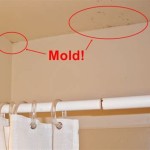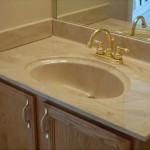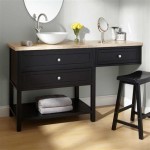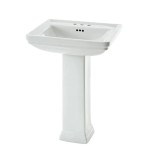Why Do I Have Small Ants in My Bathroom?
Discovering small ants in the bathroom can be a common household nuisance. While ants typically forage for food in kitchens, their presence in bathrooms can indicate specific conditions that attract them. Understanding the reasons behind this can help homeowners implement effective control and prevention strategies.
Moisture Attraction
Bathrooms are inherently humid environments. Activities like showering, bathing, and even handwashing contribute to elevated moisture levels. Many ant species, particularly smaller varieties like pharaoh ants and odorous house ants, are attracted to moisture sources. These ants require water for survival, and the consistently damp conditions in a bathroom can provide a reliable hydration source. Leaky pipes, dripping faucets, and condensation around windows can exacerbate this issue, creating ideal conditions for ant colonization.
Furthermore, the dampness can contribute to the growth of mold and mildew, which can attract certain ant species. These microscopic organisms can serve as a food source, further incentivizing ants to establish a presence in the bathroom. Addressing moisture issues is therefore crucial for preventing and controlling ant infestations.
Food Sources in the Bathroom
While less common than in the kitchen, food sources can also attract ants to bathrooms. Traces of toothpaste, soap residue, spilled sugary drinks, and even discarded hair products can provide sustenance for ants. Open containers of toiletries, especially those containing sweet or sugary ingredients, should be kept tightly sealed. Regular cleaning practices, including wiping down surfaces and promptly addressing spills, can eliminate these attractants and discourage ant activity.
Additionally, drains can harbor organic matter, including hair and soap scum, which can decompose and become a food source for ants. Regularly cleaning drains with baking soda and vinegar or a commercial drain cleaner can help eliminate these potential food sources.
Entry Points and Nesting Sites
Ants can enter bathrooms through even the smallest cracks and crevices. Gaps around windows, doors, and pipes provide access points for these tiny insects. Inspecting the bathroom for potential entry points and sealing them with caulk or weather stripping can help prevent ants from gaining access.
Within the bathroom, ants can establish nests in various concealed locations. Wall voids, spaces beneath sinks and cabinets, and even behind loose tiles can provide suitable nesting sites. These protected areas offer a stable environment for the colony to thrive and reproduce. Eliminating these potential nesting areas by sealing cracks and maintaining a tidy bathroom can deter ant colonization.
Seasonal Influences
Ant activity often increases during certain times of the year, especially during drier periods. In search of water, ants may venture indoors, and the consistently humid environment of the bathroom can become a prime target. Increased vigilance and preventative measures during these periods can help minimize the likelihood of an infestation.
Standing Water
Standing water in a bathroom isn't just a moisture issue; it's a direct invitation for ants. This could be due to a leaky faucet, a constantly dripping showerhead, a perpetually damp bathmat, or even a forgotten cup of water. Unlike condensation, which provides ambient humidity, standing water offers immediate hydration and a convenient drinking source, attracting various ant species eager to quench their thirst.
Addressing standing water promptly is crucial. Fix leaky fixtures immediately. Ensure the shower and bathtub drain completely after use. Regularly launder or air dry bathmats. And be mindful of leaving any containers with water standing for extended periods. By eliminating these easily accessible water sources, you can significantly reduce the attractiveness of your bathroom to ants.
Plants in the Bathroom
While having plants in the bathroom can enhance the aesthetic and improve air quality, they can inadvertently contribute to ant infestations. The soil in potted plants retains moisture, providing an ideal environment for ants seeking hydration. Furthermore, some ants are attracted to the sweet nectar produced by certain plants. Additionally, the plant itself can serve as a bridge, offering ants a direct route from the outside into the bathroom, bypassing other barriers.
If you have plants in your bathroom, consider placing them on elevated stands or trays filled with pebbles and water to create a barrier. Regularly check the soil for ant activity and consider using ant baits or natural deterrents around the base of the plants. If the infestation persists, relocating the plants outside of the bathroom may be necessary.

How To Stop Ants From Invading Your Bathroom Identification And Prevention Tips Tabor Pest Control

Boise Idaho Pest Control Pestcom

Blog What Are Those Teeny Weenie Ants Delta Optimist

Niagara Pest Control Why Are There Carpenter Ants In The Bathroom

Why Tiny Ants Have Invaded Your House And What To Do About It

How To Get Rid Of Sugar Ants John Moore Services

Why Do I Have Ants In My Bathroom

Why Do I Have Hundreds Of Tiny Ants All Over My Kitchen

Where Do Sugar Ants Come From How To Keep Them Away Abc Blog

How To Get Rid Of Little Black Ants In Your Bathroom Housekeeping Wonderhowto
Related Posts







